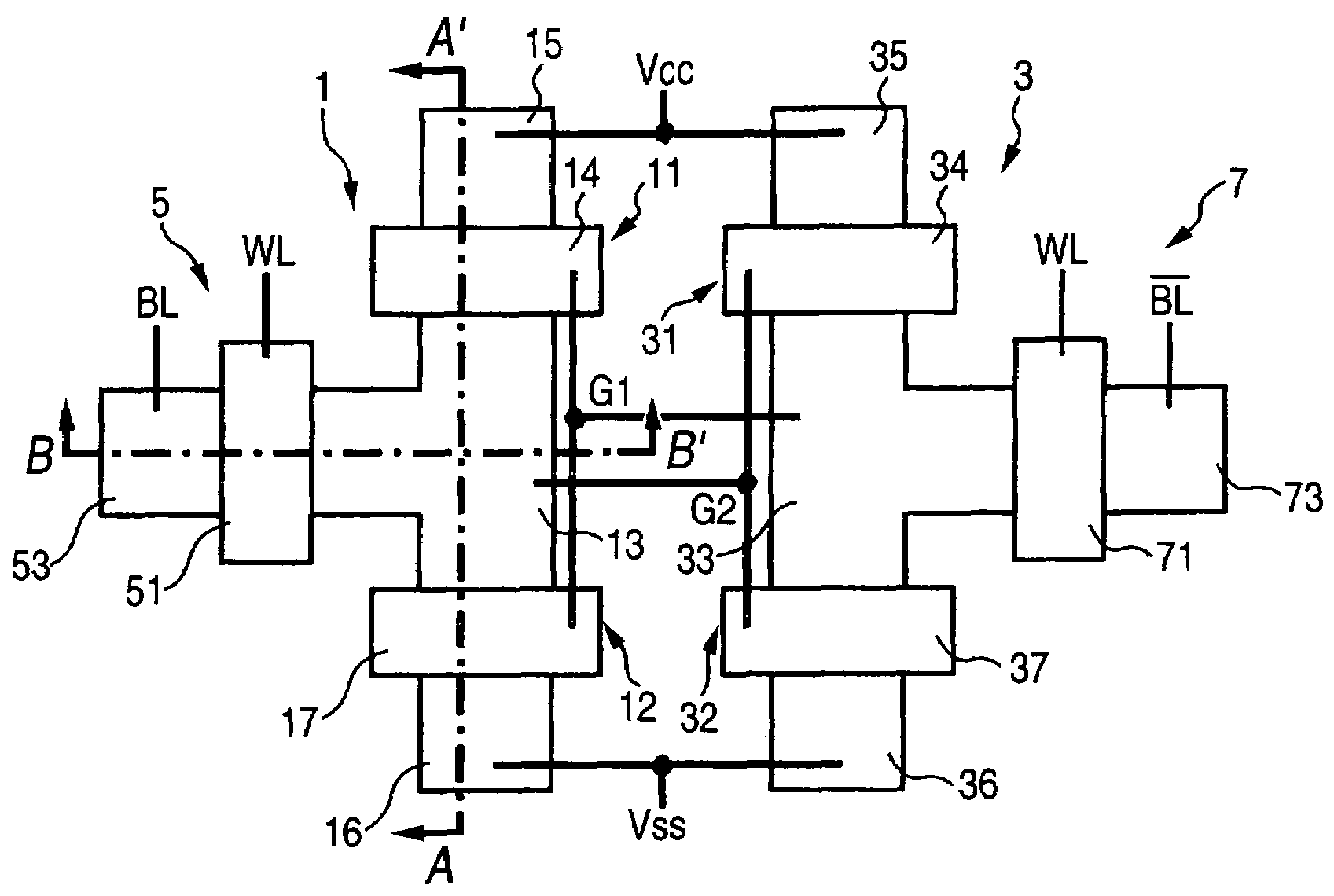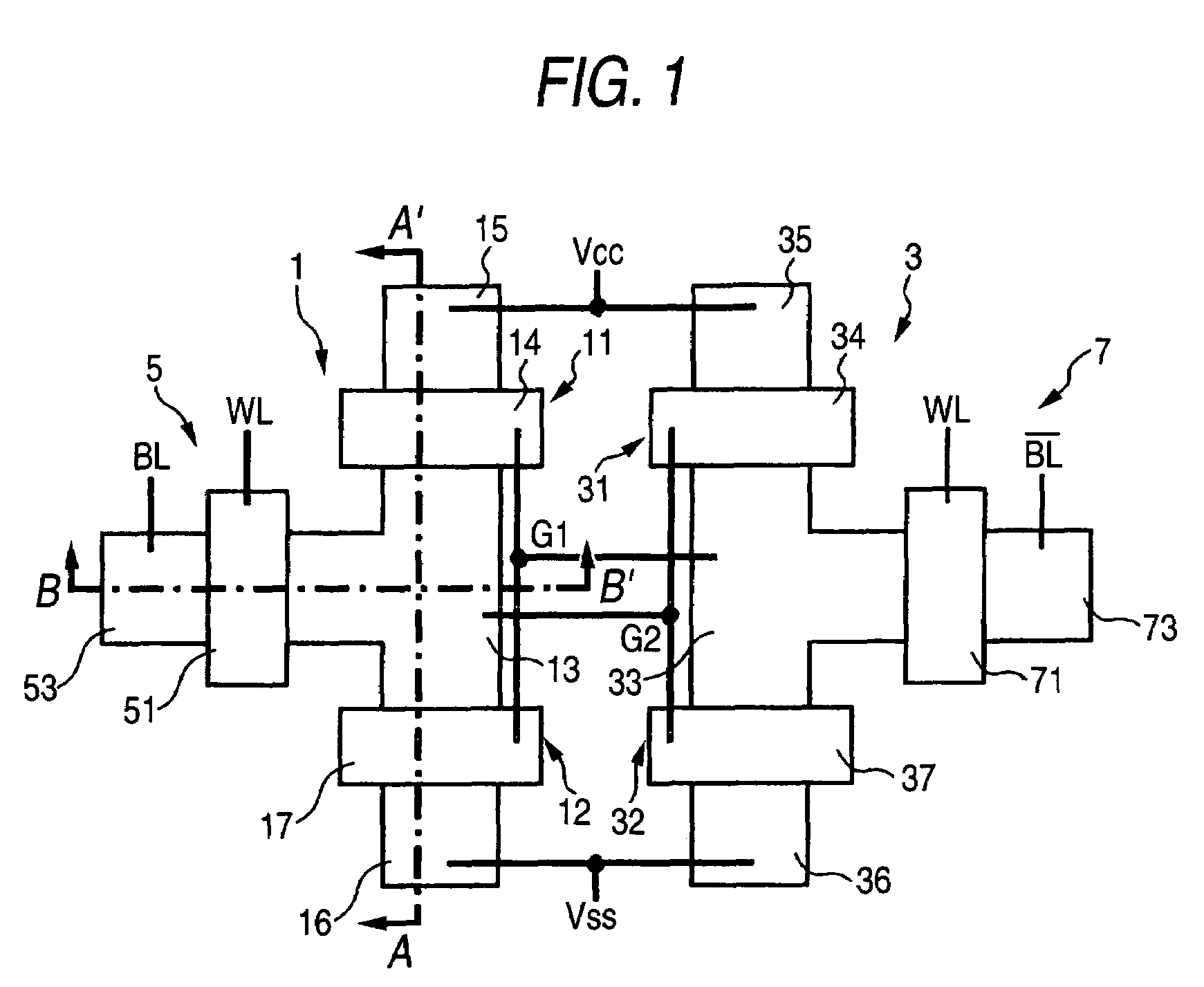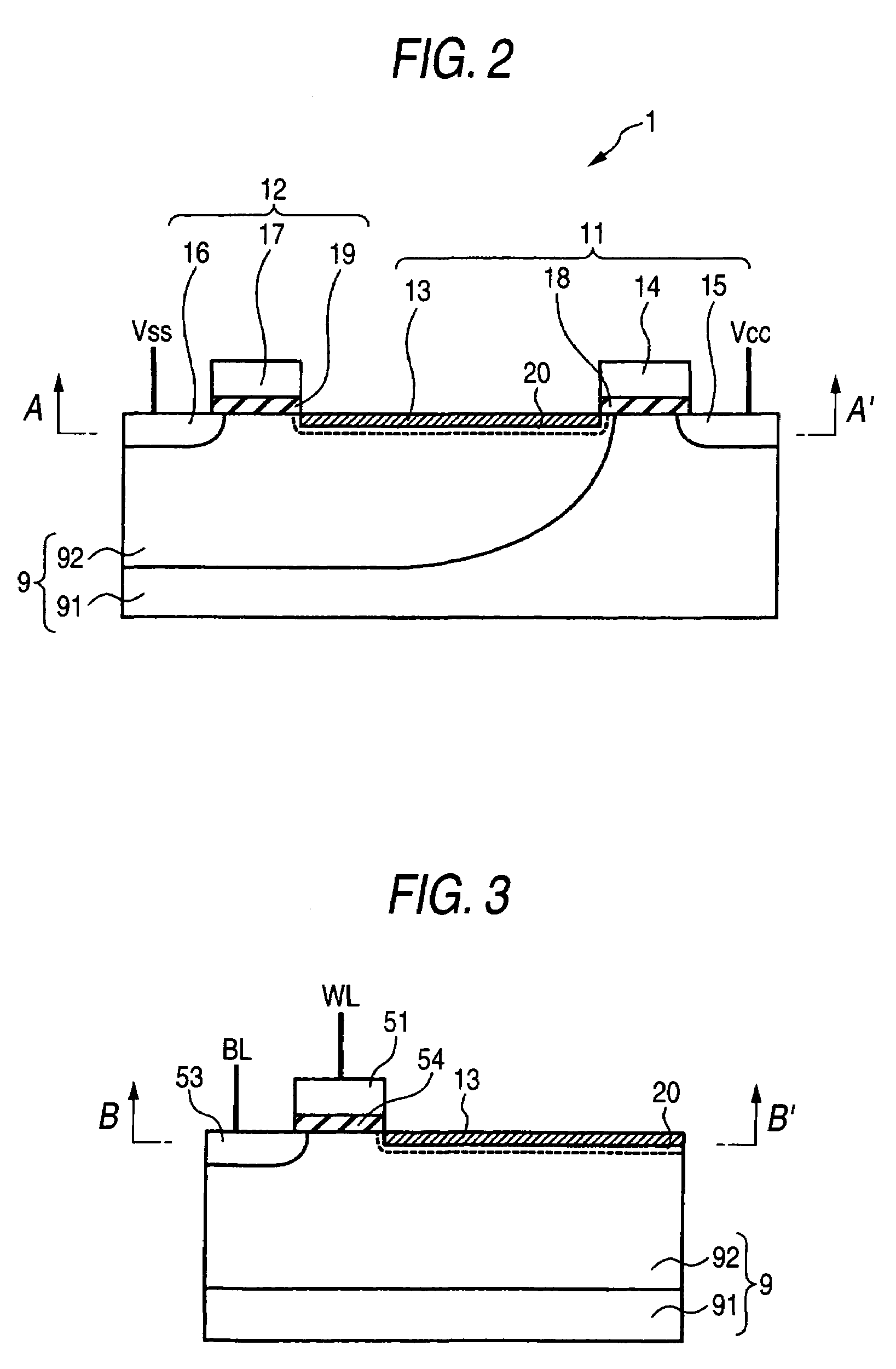Static random access memory
a random access and memory technology, applied in the field of static random access memory, can solve the problem of frequent occurrence of software errors in the conventional sram cell, and achieve the effect of improving the software error resistance of such a sram cell
- Summary
- Abstract
- Description
- Claims
- Application Information
AI Technical Summary
Benefits of technology
Problems solved by technology
Method used
Image
Examples
first embodiment
[0023]FIG. 1 shows a top view of an SRAM memory cell according to an embodiment of the present invention.
[0024]This SRAM memory cell has a first CMOS 1 and a second CMOS 3. The first CMOS 1 has a field-effect transistor 11 of positive hole conduction type and a field-effect transistor 12 of electron conduction type, which share a drain region 13. A gate electrode 14 of the field-effect transistor 11 of positive hole conduction type and a gate electrode 17 of the field-effect transistor 12 of electron conduction type are connected together (made common to the gate electrodes 14, 17) by means of an interconnection G1. Reference numeral 15 designates a source region of the field-effect transistor 11 of positive hole conduction type; and 16 designates a source region of the field-effect transistor 12 of electron conduction type.
[0025]The second CMOS 3 has a field-effect transistor 31 of positive conduction type and a field-effect transistor 32 of electron conduction type, which share a ...
second embodiment
[0043]A Schottky drain SRAM according to a second embodiment of the present invention will be described by reference to a top view shown in FIG. 7.
[0044]In this embodiment, the gate electrode 14 of the field-effect transistor of positive hole conduction type and the gate electrode 17 of field-effect transistor of electron conduction type, both belonging to the first CMOS 1, are connected together by means of an upper conductor layer M0, thereby forming a common gate of the first CMOS 1. This upper conductor layer M0 is connected to the drain region 33 of the second CMOS 3 by means of an upper conductor M1′.
[0045]The gate electrode 34 of positive hole conduction type of the second CMOS 3 is connected to the gate electrode 37 of electron conduction type by means of the upper conduction layer M0′ and further to the drain region 13 of the first CMOS 1 by means of an upper conductor M1.
[0046]When the drain region of the CMOS and the drain region pertaining to the field-effect transistor ...
PUM
 Login to View More
Login to View More Abstract
Description
Claims
Application Information
 Login to View More
Login to View More - R&D
- Intellectual Property
- Life Sciences
- Materials
- Tech Scout
- Unparalleled Data Quality
- Higher Quality Content
- 60% Fewer Hallucinations
Browse by: Latest US Patents, China's latest patents, Technical Efficacy Thesaurus, Application Domain, Technology Topic, Popular Technical Reports.
© 2025 PatSnap. All rights reserved.Legal|Privacy policy|Modern Slavery Act Transparency Statement|Sitemap|About US| Contact US: help@patsnap.com



